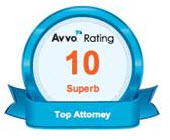When confronted with financial challenges, many distressed businesses consider filing for Chapter 11 bankruptcy. It can be a way for businesses to reorganize their debts, then reemerge as a viable entity and successfully operate again with financial issues resolved. Of course, those who are considering taking this path should know some basic information about it.
The first step is filing a Chapter 11 petition at the bankruptcy court. It needs to be the one that has jurisdiction in the area that is your principal place of business or where your business' assets are. Once you file the petition, you will be assigned the identity of "debtor in possession". That term means that you get to keep possession of your assets, but will undergo reorganization under the terms of Chapter 11 bankruptcy.
If the court approves, you may be allowed to employ an array of professionals to help you. Those may include attorneys, auctioneers and appraisers amongst others. You will also need to file all of the tax returns, reports and accounting documents that the court requires.
When filling out the petition, you will typically need your name, tax identification number or Social Security number, residence, where your business' principal assets are, the details of your plan and a request for Chapter 11 bankruptcy relief. You will also need to pay the filing fee. The bankruptcy court in your area can confirm how much that is.
Typically, petitioners for Chapter 11 bankruptcy seek the automatic stay. That suspends things like collection activities, judgments, repossessions of property and foreclosures. It gives the petitioner relief from being pursued by creditors while he or she figures out how to address his or her debts. This is one of the key benefits of filing for Chapter 11, which may be something that you'll want to look into if your business needs to reorganize.
Source: American Bar Association, "Chapter 11 Bankruptcy: A Primer," Christopher R. Kaup and J. Daryl Dorsey, accessed May. 05, 2015








No Comments
Leave a comment